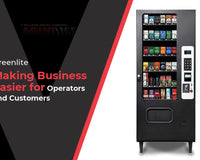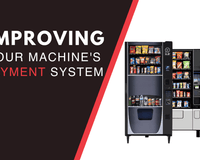The point-of-sale (POS) market is constantly evolving as new technology and vendors enter the space. In recent years, we have seen an increase in the adoption of EMV and contactless POS technology that has forever changed the way customers pay for goods and services.
It is time that the vending industry adapts to these changes. Failing to do so may result in significant financial risk due to the increasing threat of cybercrime. After all, card readers are computerized devices that store sensitive customer payment information while providing access to cash, snacks, soft drinks, and other items.
This article covers everything you need to know about EMV compliance in vending – from regulations and standards to implementation tips.
What is EMV?
EMV technology, which operates with a chip that cannot be easily reproduced and a security feature that is hard to manipulate, is the most secure mode of transaction available. EMV stands for “Europay, MasterCard, and Visa” – the three companies that created the standard for chip-based payment cards. In the payments industry, we often refer to payment security as a “risk continuum.” The EMV standard is an attempt to move the industry’s security posture from the current static position (where security is “static” and unchanging) to a more dynamic (“dynamic” means changeable over time) position. This standard aims to move the security posture from one’s current, less secure position to the point of security that will pose great difficulty for cybercriminals to crack the code and obtain sensitive customer data.
Superior, and Secure
EMV chip technology is a much-needed upgrade to their magstripe predecessor — assigning individual, anonymized tokens to each transaction via a computer “chip,” rendering any data that could be stolen essentially useless as the same cannot be used again. According to a VISA report, the implementation of EMV technology is encouraging as it has reduced at least 80% of counterfeit fraud.
The technology allows customers to pay for goods and services with their credit or debit card using a chip instead of a magnetic strip. This chip is more secure than the magnetic strip because it creates a unique transaction code for every transaction, making it almost impossible for anyone to hack the payment information and use it for fraudulent purposes.
The bottlenecks
The EMV standard has forced the payments industry to move away from magnetic stripe cards and towards chip cards. The vending industry will need to adapt to this change and make sure their card readers can accept chips cards’ “tap” payments. For example, Greenlite Legacy Seed devices will not accept “tap” payments from credit cards are mobile phones starting December 1st, 2022. Customers are encouraged to upgrade their devices at no extra cost to Greenlite ePort devices.
The transition
To stay competitive in the vending industry, vendors must be prepared for a migration to chip cards, with all their implications for hardware upgrades and software changes. This will require vendors to decide whether to implement EMV as an end-to-end solution (i.e., including the vending machine) or an off-the-shelf solution. The best way to overcome the risks associated with the transition to EMV is to partner with a reputable company that incorporates the most updated infrastructure, including a robust payment system that meets the demands of the EMV mandates.
For more information or assistance call 515-271-8404 and we can guide you to have a hassle-free, effortless EMV experience.








